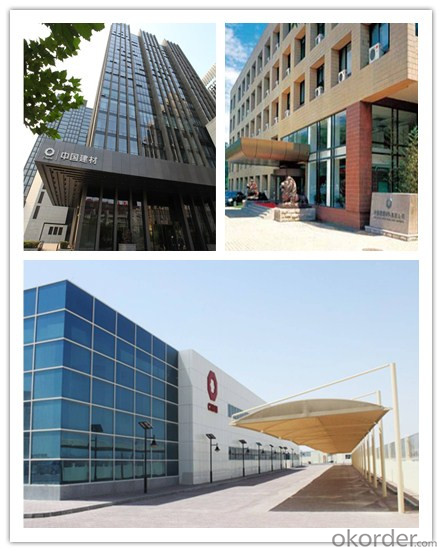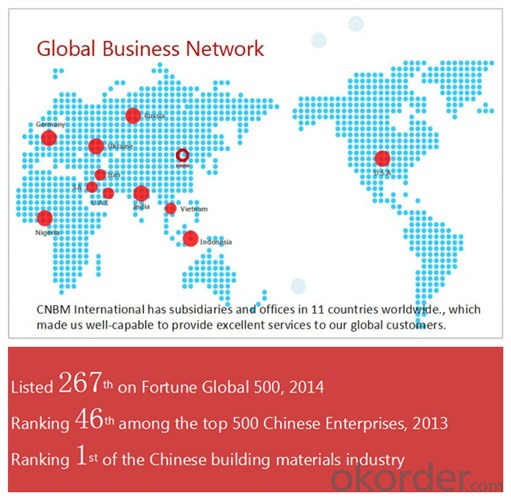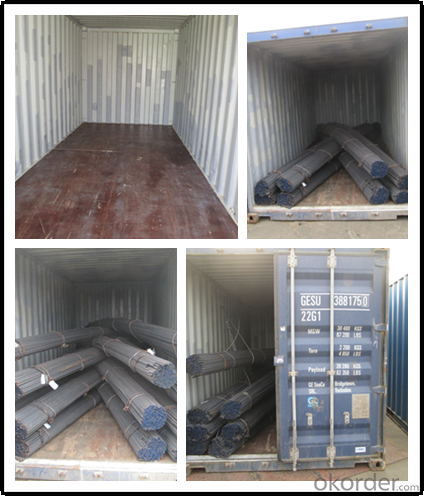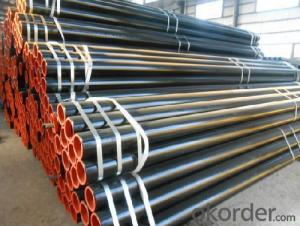seamless stainless steel tubes steel pipe
- Loading Port:
- Shanghai
- Payment Terms:
- TT OR LC
- Min Order Qty:
- 30 kg
- Supply Capability:
- 12000 kg/month
- Option:
- surface:black lacquered,varnish coating or galvanized Non alloy certification : API
OKorder Service Pledge
OKorder Financial Service
You Might Also Like
Item specifice
carbon seamless steel pipes are widely used in gas, water and oil, transpotation;constructions;Bridge,highway,windows of model steel door; building materials;fences;heating facilities Fluid Pipe;conduit pipe,scaffolding pipe.etc.
Payment Terms: L/C D/A D/P T/T
Packing and shipment
Packaged in bundles,as per customers' requirements, it can also bepackagesd as beveled ends, typed marking, black painting, plastic caps protection,woven bags packing
For 20" container the max length is 5.8m; For 40" container the max length is 12m. other options are available based on customer requests.
、Main Features of the Seamless Pipe ASTM A106/53:
• High manufacturing accuracy
• High strength
• Small inertia resistance
• Strong heat dissipation ability
• Good visual effect
• Reasonable price
Company Introduction
CNBM International Corporation is the most import and export platform of CNBM group(China National Building Material Group Corporation) ,which is a state-owned enterprise, ranked in 270th of Fortune Global 500 in 2015.
With its advantages, CNBM International are mainly concentrate on Cement, Glass, Iron and Steel, Ceramics industries and devotes herself for supplying high quality series of refractories as well as technical consultancies and logistics solution.


Packaging & Delivery
Packaging Detail | Sea worthy packing /as per customer's packing instruction |
Delivery Detail | 15 ~ 40 days after receiving the deposit |

- Q:What do you mean by "SC" in welded pipe SC200? What's the diameter of 200?
- 200 refers to the diameter of the pipe. Personally, you should be an electrical professional, but the electrical specialty rarely uses the 200 pipe diameter unless it is used when the buried cable passes the road;
- Q:What are the different coatings used on steel pipes?
- There are several different coatings used on steel pipes, including epoxy coatings, polyethylene coatings, zinc coatings, and fusion bonded epoxy coatings. These coatings are applied to protect the steel pipes from corrosion and extend their lifespan.
- Q:How are steel pipes protected against electromagnetic interference?
- Steel pipes can be protected against electromagnetic interference by applying a layer of insulating material around the pipes or by utilizing electromagnetic shielding techniques such as wrapping the pipes with conductive materials. Additionally, grounding the pipes and implementing proper grounding practices can help minimize the impact of electromagnetic interference.
- Q:What is the buckling type thin-wall steel pipe? What is a tight set of thin-walled steel tubes? What's the difference between the two?
- The nut body and the junction box are connected at one end by adopting metric fine tooth thread, and the pipe is connected with the pipe, and one end is the same as the straight pipe joint (direct). Withhold the box joint points inside and outside teeth two. The diameter of straight pipe joint is divided into 16mm, 20mm, 25mm, 32mm, 40mm, 50mm.
- Q:Are steel pipes recyclable?
- Yes, steel pipes are highly recyclable. They can be melted down and repurposed into new steel products without losing their quality or strength. Recycling steel pipes not only conserves natural resources but also reduces energy consumption and greenhouse gas emissions associated with steel production.
- Q:Can steel pipes be used for underground drainage systems?
- Yes, steel pipes can be used for underground drainage systems.
- Q:What are the common grades of steel used in pipes?
- The common grades of steel used in pipes include carbon steel, stainless steel, and alloy steel.
- Q:How do you calculate the flow rate in a steel pipe?
- When calculating the flow rate in a steel pipe, several factors must be taken into consideration. The primary factor to consider is the cross-sectional area of the pipe, which can be determined using the formula A = πr², where A represents the cross-sectional area and r represents the radius of the pipe. Afterwards, it is necessary to ascertain the velocity of the fluid moving through the pipe. This can be accomplished by utilizing the equation v = Q/A, where v denotes the velocity, Q represents the volumetric flow rate, and A represents the cross-sectional area of the pipe. To determine the volumetric flow rate, one can employ the equation Q = AV, where Q represents the volumetric flow rate, A represents the cross-sectional area, and V represents the average velocity of the fluid. Furthermore, it is essential to take into account the properties of the fluid being transported through the pipe. Factors such as density and viscosity can impact the flow rate. In conclusion, the flow rate in a steel pipe can be calculated by determining the cross-sectional area of the pipe, calculating the velocity of the fluid, and considering the properties of the fluid being transported.
- Q:What is the difference between API 5L and ASTM A106 steel pipes?
- API 5L and ASTM A106 are two commonly used specifications for seamless carbon steel pipe. While both specifications cover similar materials, they have different requirements for chemical composition, manufacturing processes, mechanical properties, and testing. API 5L is a specification created by the American Petroleum Institute (API) for line pipe used in oil and gas transportation. It covers seamless and welded steel pipe suitable for use in conveying gas, water, and oil in the natural gas and petroleum industries. API 5L specifies the minimum requirements for the manufacture of two product specification levels (PSL 1 and PSL 2) of seamless and welded steel pipes, with different chemical composition and mechanical properties. On the other hand, ASTM A106 is a specification developed by the American Society for Testing and Materials (ASTM) for seamless carbon steel pipe for high-temperature service. It covers seamless carbon steel pipe for high-temperature service in NPS 1/8" to NPS 48" inclusive, with nominal (average) wall thickness as given in ANSI B36.10. ASTM A106 provides requirements for chemical composition, manufacturing processes, mechanical properties, and testing. One key difference between API 5L and ASTM A106 is the intended use of the pipe. API 5L is specifically designed for transmission of liquid and gas, while ASTM A106 is used for high-temperature service. The chemical composition and mechanical properties of the steel may also vary between the two specifications, depending on the grade and type of steel being used. In summary, while both API 5L and ASTM A106 are widely used specifications for carbon steel pipe, they have distinct differences in terms of their intended use, chemical composition, manufacturing processes, mechanical properties, and testing requirements. It is important to carefully consider these factors when selecting the appropriate steel pipe for a specific application.
- Q:How are steel pipes used in the fabrication of storage tanks?
- Steel pipes are commonly used in the fabrication of storage tanks due to their strength, durability, and corrosion resistance. They are utilized in various ways, such as forming the structural framework of the tank, creating the walls and roof, and connecting different components together. Additionally, steel pipes can be welded or bolted to ensure a secure and leak-proof construction, making them an ideal choice for storage tank fabrication.
1. Manufacturer Overview |
|
|---|---|
| Location | |
| Year Established | |
| Annual Output Value | |
| Main Markets | |
| Company Certifications | |
2. Manufacturer Certificates |
|
|---|---|
| a) Certification Name | |
| Range | |
| Reference | |
| Validity Period | |
3. Manufacturer Capability |
|
|---|---|
| a)Trade Capacity | |
| Nearest Port | |
| Export Percentage | |
| No.of Employees in Trade Department | |
| Language Spoken: | |
| b)Factory Information | |
| Factory Size: | |
| No. of Production Lines | |
| Contract Manufacturing | |
| Product Price Range | |
Send your message to us
seamless stainless steel tubes steel pipe
- Loading Port:
- Shanghai
- Payment Terms:
- TT OR LC
- Min Order Qty:
- 30 kg
- Supply Capability:
- 12000 kg/month
- Option:
- surface:black lacquered,varnish coating or galvanized Non alloy certification : API
OKorder Service Pledge
OKorder Financial Service
Similar products
New products
Hot products
Related keywords
































